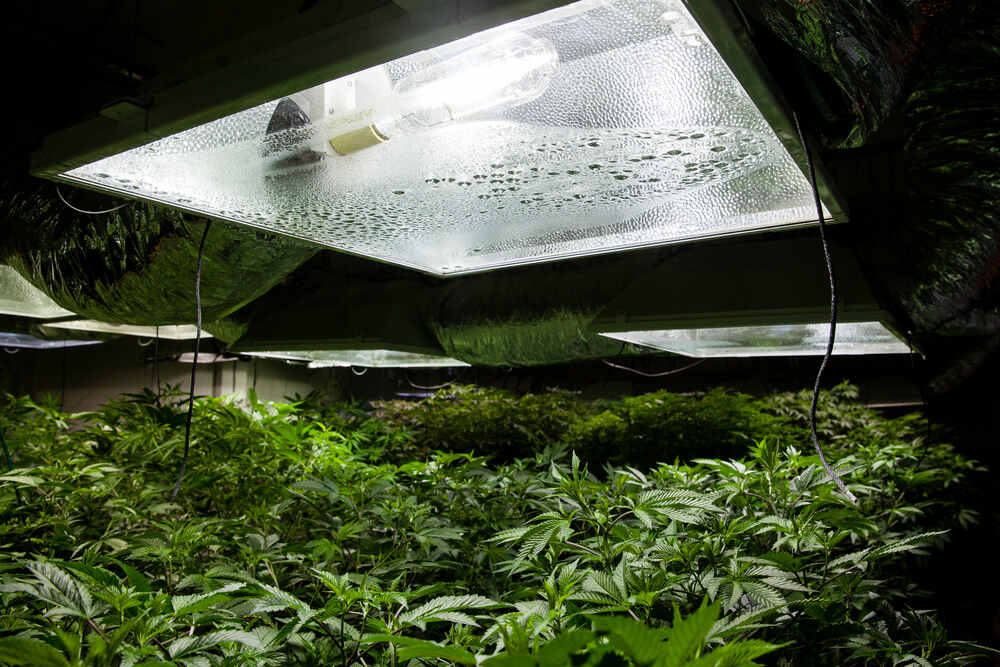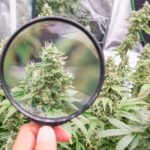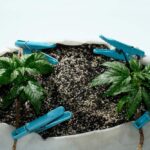The Best Fluffy Pancakes recipe you will fall in love with. Full of tips and tricks to help you make the best pancakes.

Using HPS Grow Lights for Weed
What Are HPS Grow Lights?
High Pressure Sodium (HPS) lights are a popular choice for indoor gardening because they emit an intense, warm light that mimics the sun. They’re particularly well-suited for growing weed, offering the power needed to support strong, healthy plants.
High Pressure Sodium (HPS) explained
HPS lights work by using a combination of gases, including sodium and mercury vapor, within a glass tube. When electricity passes through the tube, it creates a bright, golden-yellow light perfect for plant growth, especially during flowering.
How HPS lights work in indoor gardening
In indoor setups, HPS lights provide the necessary light spectrum that plants need for photosynthesis. They’re especially effective in enclosed spaces like grow tents because they deliver high-intensity light capable of reaching lower canopy levels.
Differences between HPS and other grow lights
Unlike LEDs, which use less energy, or Metal Halide (MH) lights that are better for vegetative growth, HPS lights excel in the flowering stage. They produce more heat, which can be a pro or con depending on your grow setup.
Benefits of Using HPS Grow Lights for Growing Weed
Advantages during the flowering stage
HPS lights shine brightest during the flowering stage, literally. Their warm light spectrum encourages bud development, helping your plants produce dense, resin-rich flowers.
Optimal light spectrum for photosynthesis
The orange and red spectrum emitted by HPS lights is ideal for photosynthesis, particularly in later growth stages. This spectrum mimics the autumn sun, signaling plants to focus energy on flowering.
Yield potential with HPS lighting
HPS grow lights are a favorite among growers aiming for high yields. Their powerful output ensures every part of the plant gets the light it needs, which leads to bigger and better harvests.
Setting Up Your HPS Grow Lights
Choosing the right wattage for your grow space
Select wattage based on your grow area. For example, a 400-watt HPS light suits a small space, while a 1000-watt setup works for larger grows. Matching the light to your space ensures even coverage and prevents energy waste.
Using reflectors to maximize light intensity
Reflectors help direct light downwards, preventing wastage. They’re essential for maximizing your HPS light’s efficiency and ensuring your plants get the most out of every lumen.
The role of ballasts in HPS lighting systems
Ballasts regulate the current to your HPS lights, ensuring they work safely and efficiently. They’re a must-have for any HPS setup, so invest in a reliable one to avoid flickering or uneven light output.
Proper positioning for effective plant cultivation
Hang your HPS lights at the correct height to avoid burning your plants. Typically, this means keeping them 12-24 inches above the canopy, adjusting as plants grow taller.
Best Practices for Growing Weed with HPS Lights
Adjusting light intensity for different growth stages
During the vegetative stage, lower the light intensity slightly. As plants enter flowering, increase intensity to encourage bud production. Using a dimmable ballast makes this process easier.
Managing heat output from HPS lamps
HPS lights can get hot! Use fans or an air-cooled hood to manage heat, keeping your grow space between 70-85°F. Heat management prevents stress and keeps plants thriving.
Balancing lumens and light distance
Finding the sweet spot between light intensity and distance is key. Use a lux meter to measure light at canopy level, ensuring plants receive enough lumens without burning.
Common Issues and How to Solve Them
Dealing with overheating in grow tents
If your tent gets too hot, improve ventilation with an exhaust fan or use an air-cooled reflector. Avoid placing lights too close to plants to minimize heat damage.
Troubleshooting ballast problems
Ballasts can fail if overloaded or if connections are loose. Regularly check wiring and ensure your ballast matches the wattage of your HPS bulb to avoid flickering or outages.
Signs of light stress in plants
Plants experiencing light stress may show curling leaves, bleaching, or slowed growth. If you spot these, raise your lights or reduce the intensity immediately.
Alternatives to HPS Grow Lights
Comparing HPS to LED grow lights
LED lights are energy-efficient and generate less heat, but they often come with a higher upfront cost. While HPS lights dominate flowering, LEDs are great for full-cycle growing.
Using Metal Halide (MH) lights in combination with HPS
Combining MH and HPS lights covers the full light spectrum. Use MH for vegetative growth and switch to HPS for flowering for optimal plant development.
Exploring other HID lighting options
Beyond HPS and MH, other HID options like Ceramic Metal Halide (CMH) offer balanced spectrums. These can be a good middle ground but often come with higher costs.
FAQ:
What are HPS grow lights best used for?
HPS lights are ideal for flowering plants due to their warm light spectrum that boosts bud production and resin development.
How do HPS lights compare to LED lights for growing weed?
HPS lights are powerful and cost-effective but produce more heat, while LEDs are energy-efficient and offer better spectrum control.
What wattage of HPS light should I use for my grow space?
Match wattage to your grow space: 400W for small areas, 600W for medium spaces, and 1000W for larger grows.
Do HPS lights require special ballasts?
Yes, HPS lights need ballasts to regulate current and ensure safe, efficient operation.
Can HPS grow lights be used during the vegetative stage?
Yes, but they’re less efficient for vegetative growth compared to MH or LED lights.




